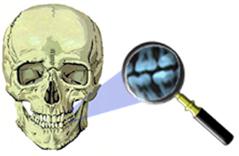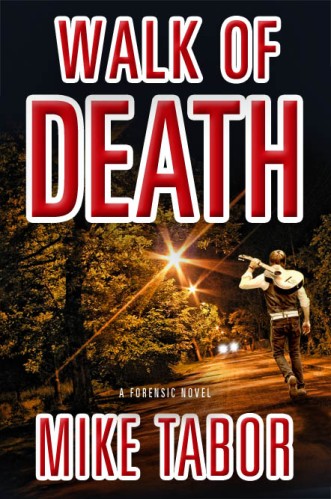The next time you’re in deep thought imagining what your protagonist can do next to draw readers in to your plot, think not only of ‘whodunnit’, or ‘what happened’, but also, ‘who is it’? Many a successful storyline has been written about the first two, but not so many where the mystery is solving WHO this John Doe really is. For now, let’s just explore some details of how forensic identification really works. Here’s how it started out for this forensic odontologist.
In the spring of 1983, I began to assist the newly appointed state medical examiner with the identification of a ‘John Doe’, whose body had been pulled from the murky waters of the Cumberland River, here in Nashville, Tennessee. The badly decomposed body was bloated, discolored and bore an odor that would choke most. Visual identification would be impossible. Fingerprints were long gone. DNA had yet to be perfected. Fortunately, the decedent bore a mouthful of expensive gold inlays in his molars that would uniquely differentiate him from any other person. That was my baptism in the world of forensic identification.
Barely two years later, I testified in Tennessee’s first criminal trial where human bite marks would be admitted in a court of law. Opposing my testimony as expert witness was Dr. Richard Souviron, Chief Forensic Odontologist for Miami/Dade County Medical Examiner’s office. Fresh off his appearance in the now world famous Ted Bundy trial, Dr. Souviron later became a lifelong friend and mentor. Bundy had become the first person in US history sentenced to death where all evidence was circumstantial except for the damning bitemark he left on a victim. All Tennessee eyes were on Souviron’s testimony, since Bundy had become well known for his serial killing rampage of over a hundred women from Seattle to Tallahassee. Souviron’s testimony was pivotal in obtaining a guilty verdict. The fact that Bundy had been employed at a suicide prevention hotline desk made this case all the more daunting.
Another notorious case in middle Tennessee involved the mysterious disappearance of the wife of a prominent Nashville attorney. Janet March suddenly disappeared in 1996, and her body has never been discovered.
Missing persons departments have worked tirelessly for decades. Since media presence was so high, any time bones were found, our medical examiner’s team was called to the scene. Many times, it was animal remains, but every time it was a dead end. After over a decade, her husband was the first Tennessean to be convicted of a capital offense without ever producing a body. Just when you think it is not possible, then the truth often takes a mysterious turn! It proves that oftentimes, the truth is stranger than fiction.
No forensic experience, however, would surpass the enormous identification task while working with victims of the 9-11 attack of the World Trade Center. I had the privilege of assisting the New York Medical Examiner’s Office in the identification of those victims. Over an eleven month period, forensic scientists identified 1,000 of the roughly 3,000 victims of that horrific event. A large majority of those ID’s were done by dental record comparison. As recent as May 10, 2014, random identifications are made, over a decade since the attack. There are still almost 8,000 remaining unidentifiable body parts stored at the ONYME. http://news.msn.com/us/9-11-remains-returned-to-world-trade-center-site#tscptme
There are three basic methods used to confirm the identity of an individual. Fingerprints have been used the longest and have become a very reliable method of identification. It makes one assumption: fingerprints are like snowflakes, in that there are no two that are exactly alike. But fingerprints are not durable in weather and environmental factors, and will disintegrate within days in the hot summer.
Around 2000, DNA became, and is now, considered the gold standard for identification. DNA’s reliability is unquestioned, especially since it is the only scientific method able to quantify the accuracy of its determination. There is one major drawback. The microscopic evidence is very sensitive to the elements. There are several types of DNA, and most are easily destroyed and can be lost within days after elemental exposure.
The third method is that of dental characteristic comparison. Like all methods, it requires the comparison of a known sample to an unknown sample. We must have dental records and/or xrays of an individual who authorities think it might be. The advantage that dentistry has over the other two methods is that human teeth are virtually indestructible. Most all petroleum based fires will not burn enamel, the hardened outer covering of our teeth. The dental restorations are equally as durable and will withstand all environmental decomposition.
Forensic dentistry has been used to confirm identity of some rather notorious individuals. Back in 1998, I was consulted by the state medical examiner’s office to confirm a dental ID on James Earl Ray, the confessed killer of civil rights leader Martin Luther King. Even though he died of hepatitis while in prison, and his face was readily identifiable, our medical examiner wanted certainty. He remembered the controversy with Lee Harvey Oswald’s body just eighteen years after JFK’s assassination. Naysayers claimed conspiracy, so forensic dentistry reconfirmed his identity following an exhumation in Dallas.
What case is the most bizarre mystery I’ve worked? It spanned over a decade and resulted from the murder of a John Doe whose body was placed in a car, burned beyond recognition, while the killer staged his own death. When his plot was later foiled, it took years to determine the victim’s identity. It was the first time in Tennessee courts of law where a capital murder hearing took place and no one in the courtroom had any idea who the victim was! Think about that for a minute!! This mysterious convoluted storyline gave birth to my first forensic novel, based on this case entitled ‘Walk of Death’.
Why do you do this? I get that question a lot. ‘I don’t see how you stand being around all that stuff all the time!’ Not sure I have a really good answer. The grossness of the endeavor is without question, but that is something that you can overcome. You almost have to look at the project as if you were dissecting a frog in biology class. I don’t mean to trivialize death but by keeping it clinical, the process is more manageable.
Although it sounds somewhat like a cliché, the one redeeming factor in forensic identification is the fact that we are able to finally bring closure to the families whose lives have already been turned upside down from the disappearance of their loved one. The confirmation that truly the ‘search is over’ is somehow able to bring some measure of peace to those families, is an element that probably cannot be completely understood, unless you walked in their shoes. The peace, that’s what I’m after!
Dr. Mike Tabor has served as Chief Forensic Odontologist for The State of Tennessee Office of the Medical Examiner since 1983. He is past President of the American Board of Forensic Odontology and Section Chair and Fellow for the American Academy of Forensic Sciences, as well as past president of the Tennessee Board of Dental Examiners.
He assisted the NYC medical examiner’s office after the 911 event.
Dr. Tabor is the author of his first forensic novel, “Walk of Death”, the story of a cold case murder involving forensic dental identification that took over a decade to solve. His second in the Chris Walsh series is entitled “Out of the Darkness”. Since entering the writing phase of his career, Tabor has become a member of the Mystery Writers of America, as well as the International Thriller Writers Association.
For more info on Dr. Tabor’s work, he can be reached at:




























Bruce King
March 21, 2015 at 6:59 pm
Great article! How far can a fire deteriorate a denture and still be recognizable?
Thanks
LikeLike
D.P. Lyle, MD
March 22, 2015 at 7:10 am
It depends. Dentures are typically made of a gum colored acrylic base and either plastic or porcelain teeth–often with a metal framework. Depending on the intensity and duration of the fire, the acrylic and plastic could be severely damaged or destroyed by the fire, while the metal frame and any ceramic teeth would be more likely to survive and be recognizable.
LikeLike
CHS
June 18, 2015 at 3:10 am
Keep on blogging good materials, very helpful.
LikeLike